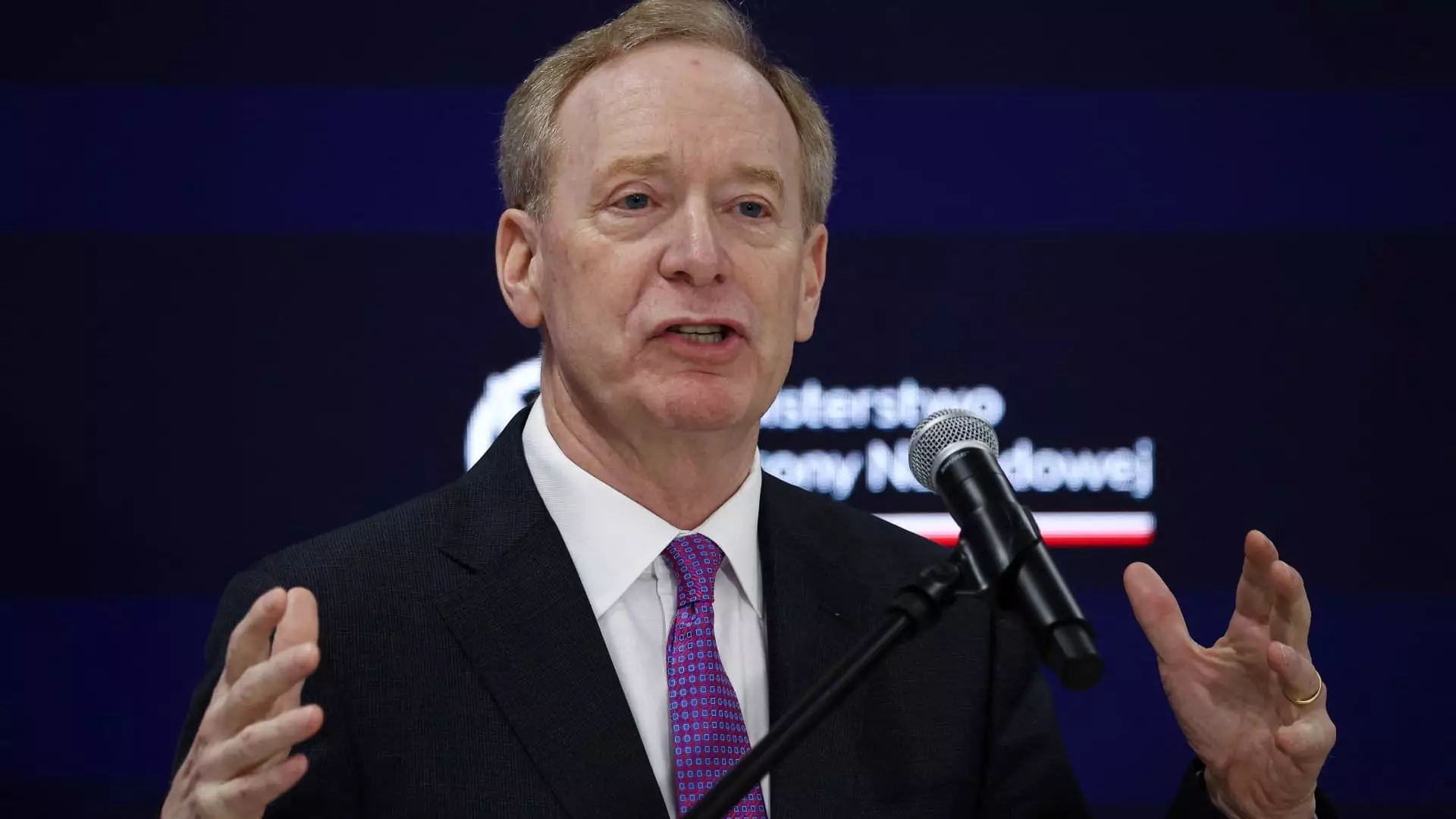Microsoft, the tech behemoth that has long dominated the digital landscape, finds itself trudging through a complicated relationship with European laws. President Brad Smith’s recent declaration of unwavering compliance with European regulations resonates deeply amidst doubts raised by ongoing international tensions. In a landscape where European regulators are flexing their muscles to rein in monopolistic practices, Microsoft’s positioning is a microcosm of broader geopolitical frictions, especially following U.S. tariffs under Donald Trump. The dichotomy of commitment and reluctance encapsulates an essential dilemma that tech companies will have to navigate in the choppy waters of international policy.
Regulatory Framework: Understanding Europe’s Digital Markets Act
The European Union’s enactment of the Digital Markets Act (DMA) serves as both a shield for smaller players and a sword aimed at corporate giants like Microsoft. The DMA is not merely a regulatory hurdle but a strategic maneuver designed to regain consumer power and entrepreneurial spirit stifled by the overwhelming presence of Big Tech. However, Europe’s insistence on strict compliance often meets resistance. Companies find themselves caught between local legalities and the expectation of maintaining a competitive, innovative spirit on a global scale. While Smith’s statement about respecting these laws speaks to corporate responsibility, it also highlights a grim reality: compliance often feels less like collaboration and more like surrender.
The Charm Offensive: A Strategic Repositioning
Microsoft’s recent charm offensive encapsulates a strategic shift in narrative — from one of dominance to deference. Smith’s approach can be interpreted as an effort to reassure European regulators while placating U.S. authorities. However, this duplicitous strategy is fraught with risks. It reflects a bitter truth: America’s tech giants are now playing defense against a backdrop of disparaging tariffs and growing regulatory scrutiny. The overture to Europe thus seems less like an olive branch and more like a forced reconciliation, aimed at softening the impact of potential backlash from tariffs and criticism.
The Uneasy Relationship with U.S. Administration
Former President Trump’s aggressive trade policies have widened the chasm between American tech giants and European regulators. His criticisms of the EU’s actions amplify fears that punitive economic measures could undermine U.S. corporations. Yet amidst this turbulence, Microsoft’s engagement and compliance with European laws manifest a different narrative—one that indicates a clear understanding of global interconnectedness. While the allure of deregulated markets may tempt firms to dismiss compliance, the evolving political landscape demands an adaptable and responsive approach to governance.
A Double-Edged Sword: The Fine Line of Compliance
For Microsoft, compliance with the DMA feels inevitable, yet it’s riddled with complexities that often go unacknowledged. Compliance can enable enhanced market access but risks stifling innovation if regulations become overly restrictive. While Smith advocates for building “digital infrastructure” that respects European law, one can’t help but question the long-term implications of such a stance. Will tech firms like Microsoft lobby for a more balanced regulatory approach that fosters innovation rather than stifling it, or will they become entangled in an unending cycle of compliance, hampering their inherent potential?
The Financial Stakes: Navigating Fines and Tariffs
The staggering fines levied against Apple and Meta illustrate the precarious stakes of operating within such tightly regulated environments. Both companies have incurred significant penalties for breaching the DMA, a stark reminder that the costs of non-compliance can escalate quickly. Microsoft is undoubtedly aware of these financial ramifications as they cautiously navigate the fine line between adhering to regulations and maintaining profitability. This dynamic underscores the contradictory nature of compliance; while it aims to create a level playing field, it often disproportionately affects those with the deepest pockets.
The Future Outlook: An Evolving Landscape
As tensions between the EU and U.S. persist, Microsoft’s strategy of compliance can be seen as an enlightened approach to an intricate global marketplace. However, this also raises questions about sovereignty and autonomy for American tech giants operating worldwide. As Microsoft continues to toe the diplomatic line, observers must remain critical of the implications this has for innovation and competition. The uneasy coexistence of compliance and competition will be a defining characteristic of our digital future, compelling tech giants to either adapt or fall behind in an evolving landscape shaped by both local and international dynamics.

